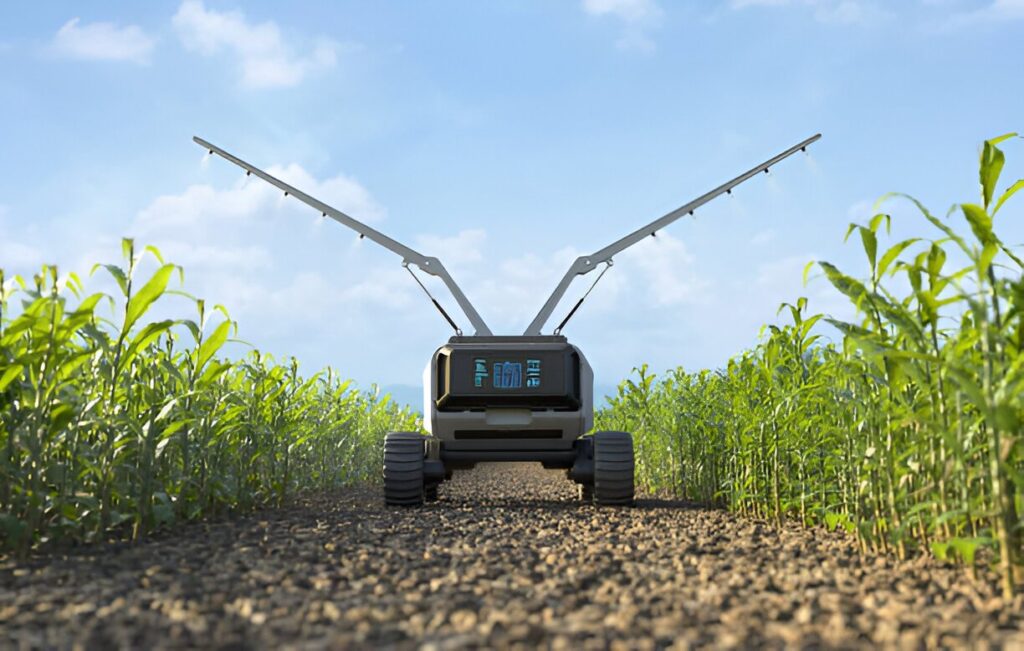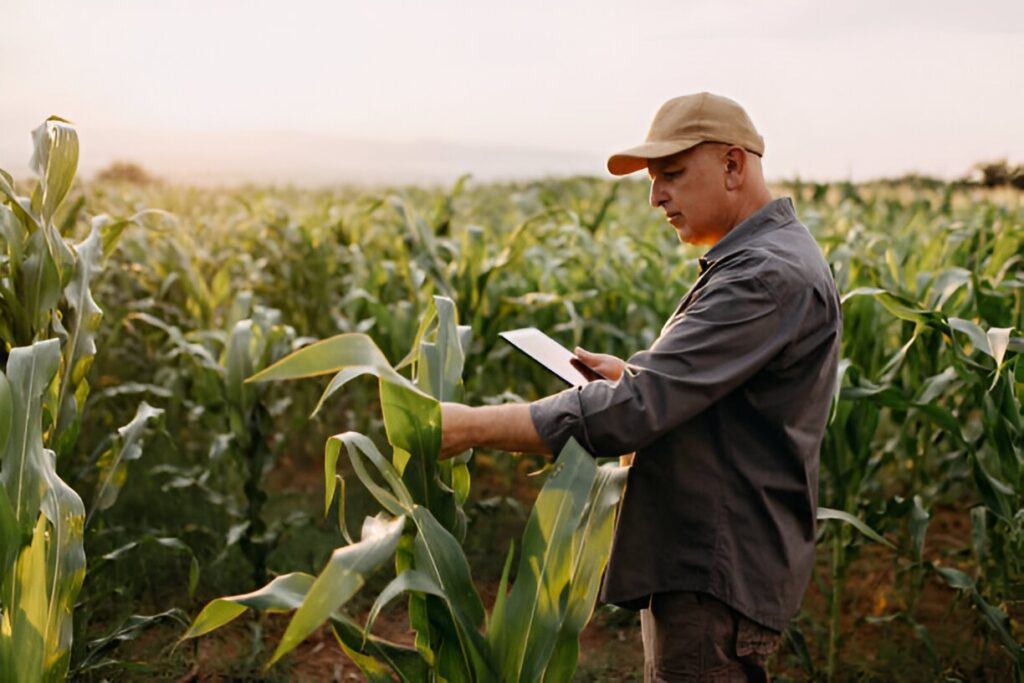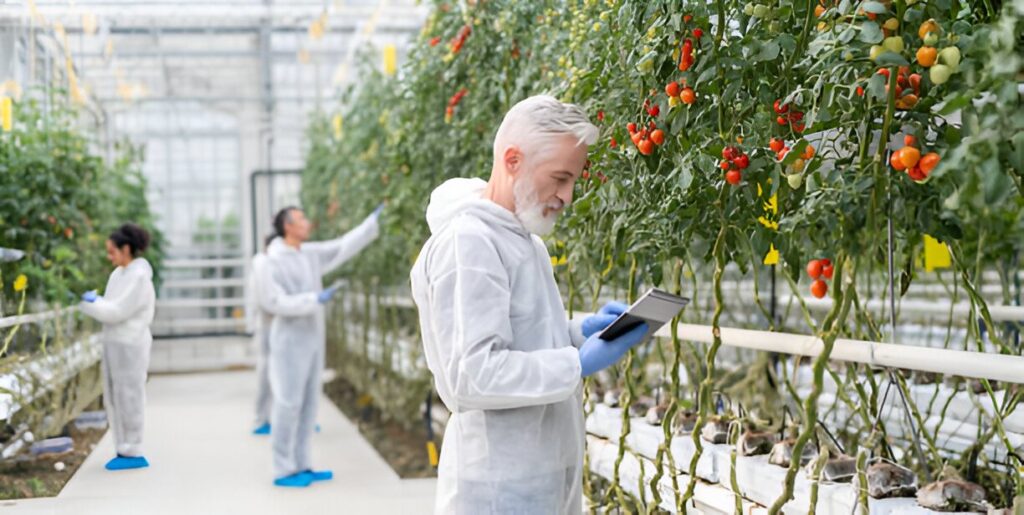In this article, we will explore the concept of precision agriculture, its benefits, and how farmers can implement it on their farms. We’ll delve into real-world examples to illustrate its impact and suggest ways to overcome potential challenges associated with adopting these technologies.
1. What is Precision Agriculture?

Precision agriculture, also known as precision farming, is a farming management concept that utilizes technology. It includes GPS and sensors, to collect data and make informed decisions about crop production. This data is then used to create customized strategies for planting, fertilizing, and harvesting crops, maximizing efficiency and yields. By taking a more precise approach, farmers can cater to the specific needs of each crop and even each plant.
The Raven Precision Agriculture Center defines precision agriculture as “a farming management concept based on observing, measuring, and responding to inter- and intra-field variability in crops.” This includes monitoring and analyzing factors such as soil conditions, moisture levels, and weather patterns to determine the optimal timing and placement of resources. These practices are not only about reacting to current conditions but also about predicting future conditions to stay ahead of potential challenges.
1.1 Benefits of Precision Agriculture
The use of precision has numerous benefits for farmers, including:
- Increased efficiency: By utilizing data-driven insights, farmers can optimize their use of resources, such as water, fertilizer, and pesticides, resulting in reduced waste and increased efficiency. This optimization leads to a smarter allocation of inputs, directly correlating with cost-effectiveness and environmental conservation.
- Higher yields: With precision agriculture, farmers can make informed decisions about planting, fertilizing, and harvesting, resulting in higher crop yields. These improved yields are critical in meeting the growing food demand without necessitating the expansion of farmlands into undeveloped areas.
- Cost savings: By using resources more efficiently and reducing waste, farmers can see cost savings in their operations. These savings can be significant over time, allowing for reinvestment into the farm or other areas of need.
- Environmental sustainability: Precision allows farmers to use resources more sustainably, reducing the negative impact on the environment. This approach helps to minimize the carbon footprint of farming operations and supports the preservation of natural ecosystems.
- Improved decision-making: With access to real-time data and insights, farmers can make informed decisions to address issues such as crop disease, pest infestations, or weather patterns that may affect their crops. The ability to respond quickly to these challenges can save crops from significant damage and prevent losses.
2. Implementing Precision Agriculture
Implementing precision on your farm requires a combination of technology, data analysis, and strategy. Here are several steps to assist you in initiating the process:

2.1 Assess Your Farm’s Needs
Before implementing precision agriculture, it’s essential to assess your farm’s needs and determine which areas can benefit the most from this approach. This could include factors such as soil types, weather patterns, and crop yield history. By identifying these needs, you can focus on specific areas to optimize your resources and improve yields. Understanding the unique characteristics of your farm will also help in selecting the right technologies and methodologies for your precision program.
2.2 Utilize Technology
The first step in implementing precision agriculture is to utilize technology to collect data. This can include GPS, soil sensors, drones, and other tools that provide real-time information about your fields. By utilizing these technologies, you can gather data such as soil moisture levels, nutrient levels, and crop growth rates to create a comprehensive picture of your farm’s conditions. These technological tools can be integrated into a centralized system to enable easier access and management of the collected data.
2.3 Analyze Data and Make Informed Decisions

Once you have collected data, it’s essential to analyze it to gain insights into your farm’s conditions. This can involve using software or consulting with agronomists to interpret the data and make informed decisions about your farming strategies. By analyzing data, you can identify areas that require additional resources, adjust planting and fertilizing schedules, and make other decisions to optimize crop yields. This step is crucial as it turns raw data into actionable intelligence.
2.4 Implement Precision Agriculture Strategies
Based on the data analysis, you can now implement precision agriculture strategies on your farm. This could include variable-rate application, which allows for the precise application of fertilizers and pesticides based on soil conditions, or automated irrigation systems that adjust water usage based on moisture levels. These strategies help to optimize resource usage and improve crop yields. The implementation phase is where the planning and analysis translate into tangible changes in the field.
2.5 Continuously Monitor and Adjust
Precision agriculture is an ongoing process, and it’s essential to monitor and adjust your strategies based on new data continuously. This could involve making changes to your planting schedule, adjusting irrigation levels, or addressing any issues that may arise, such as pest infestations. By continuously monitoring and adjusting your strategies, you can maximize your crop yields and achieve optimal efficiency. It’s important to stay agile and be willing to adapt to new information and evolving conditions.
3. Real-World Examples of Precision Agriculture Success
The use of precision agriculture has seen significant success in various farming operations. Here are a few examples of how precision agriculture has helped farmers increase their crop yields:

- AeroFarms, a New Jersey-based indoor vertical farming company, uses precision agriculture to monitor and adjust growing conditions, resulting in a 390% increase in crop yields compared to traditional farming methods. Their system uses less water and eliminates the need for soil and pesticides, showcasing the potential for urban farming.
- In Brazil, a soybean farm saw a 28% increase in yields after implementing precision agriculture techniques. It resulted in 30% increase in profits. This case highlights the scalability of precision agriculture, as Brazil is a major agricultural producer on the global stage.
- A wine producer in California uses precision agriculture to monitor soil conditions and adjust irrigation levels. It resulted in 50% increase in grape yields. This example demonstrates the versatility of precision agriculture technologies across different types of crops and climates.
4. Conclusion
With the world’s population continuing to grow, maximizing crop yields is becoming increasingly important. Precision offers farmers a data-driven approach to optimize resources, increase efficiency, and improve crop yields. By utilizing technology, analyzing data, and implementing precision agriculture strategies, farmers can achieve maximum efficiency and yields on their farms.
Whether you’re a small family farm or a large-scale operation, implementing precision agriculture can help you achieve success in today’s competitive farming industry. As technology advances, the possibilities for further enhancements in precision agriculture will continue to evolve. It offers greater opportunities for farmers around the world.
For further exploration of topics related to agriculture, click here.

